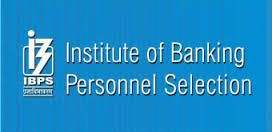1. Buffer is device/storage area _____________.
A. Where data are temporarily stored
B. Where data is permanently stored
C. Where data error occurs
D. All of the above
Ans: A
2. A network geometric arrangement in which a single connecting line is shared by a number of nodes is called _____________.
A. Car Topology
B. Bus Topology
C. Truck Topology
D. All of the above
E. None of these
Ans: B
3. An error in a computer program is referred as _____________.
A. Bug
B. Bit
C. Virus
D. All of the above
E. None of these
Ans: A
4. Circuits that provide a communication path between two or more devices of a digital computer system is _____________.
A. Car
B. Bus
C. Truck
D. All of the above
E. None of these
Ans: B
5. A fixed number of adjacent bits that represent a particular character or symbol are referred as _____________.
A. Byte
B. Octal
C. Bubble
D. All of the above
E. None of these
Ans: A
6. Cache memory is a _____________.
A. Small buffer storage
B. Permanent storage
C. Main memory
D. All of the above
E. None of these
Ans: A
7. The total number of digits (symbols) available to represent numbers in a positional number system is referred as _____________.
A. Number system
B. Base
C. Power
D. All of the above
E. None of these
Ans: B
8. Cache memory is _____________.
A. Smaller and faster than main storage
B. Bigger and slower than main storage
C. Smaller but slower than main memory
D. Bigger and faster than main memory
Ans: A
9. Cache memory _____________.
A. Is a Static RAM
B. Increases the speed of processing by making current programs and data available to the CPU at a rapid rate
C. Both A and B are true .
D. Both A and B are false
E. None of these
Ans: C
10. Following is false for BASIC _____________.
A. Beginners All-Purpose Symbolic Instruction Code
B. High-level interactive programming language
C. Works in time sharing environment
D. Low level object oriented language
E. None of these
Ans: D
11. A unit for measuring data transmission speed that describes the capacity of a carrier is referred as _____________.
A. Baud
B. Bit
C. Bond
D. All of the above
E. Batch
Ans: A
12. A process of trying out a new product by independent users before it is finally manufactured/developed _____________.
A. Alpha test
B. Beta Test
C. Gamma test
D. All of the above
E. None of these
Ans: B
13. A selection, choice, or condition involving two possibilities is referred as _____________.
A. Unary
B. Binary
C. Octal
D. All of the above
E. None of these
Ans: B
14. Base band System is _____________.
A. A networking system
B. Where the channel support a single digital signal
C. Both A. and B. are true
D. All of the above
E. None is true
Ans: C
15. One of the early coding systems, based on the idea of converting each digit of a decimal number into its binary equivalent rather than converting the entire decimal value into a pure binary form is _____________.
A. ASCII code
B. BCD
C. ASCII-8
D. All of the above
E. None of these
Ans: B
16. In Batch processing _____________.
A. Several computer programs runs one after another without human interaction to run each program individually
B. Several computer programs runs one after another with human interaction to run each program individually
C. Selected computer programs runs one after another with human interaction to run each program individually
D. All of the above
E. None is true
Ans: A
17. BISYNC is _____________.
A. Binary synchronous
B. A process of transmitting data
C. A half-duplex, character oriented, synchronous data communication transmission method
D. All of the above E. None of these
Ans: D
18. A device that is used to transmit data from one location to another is referred as _____________.
A. Storage
B. Memory
C. Carrier
D. All of the above
E. None of these
Ans: C
19. Programs developed by an outside supplier and provided to the user in a machine readable form is known as _____________.
A. Canned programs
B. Beta program
C. Alpha program
D. All of the above
E. None of these
Ans: A
20. A binary numbers are represented by _____________.
A. Digits 0 and 1
B. Digits 0, 1, …, 8
C. Digits AB, C,…
D. All of the above
E. None of these
Ans: A
21. BIOS is responsible for _____________.
A. Handling the particulars of input/output operations
B. Output operations
C. Input operations
D. All of the above
E. None of these
Ans: A
22. BIOS is an abbreviation for _____________.
A. Binary Input/Binary Output
B. Binary synchronous
C. Binary digit
D. All of the above
Ans: A
23. BISYNC is an abbreviation for _____________.
A. Binary Input/Binary Output
B. Binary synchronous
C. Binary digit
D. All of the above E. None of these
Ans: A
24. The overall design, construction, organization and interconnecting of the various components of a computer system is referred as _____________.
A. Computer Architecture
B. Computer Flowchart
C. Computer Algorithm
D. All of the above
E. None of these
Ans: A
25. A number system with a base of two is referred as _____________.
A. Unary number system
B. Binary number system
C. Octal number system
D. All of the above
E. None of these
Ans: B
For more cut off lists or student resources contact us at info@vskills.in
For Government certification, visit www.vskills.in and register for exam
on 13 July, 2013 now!!
Follow us on facebook visit www.facebook.com/vskills.in





